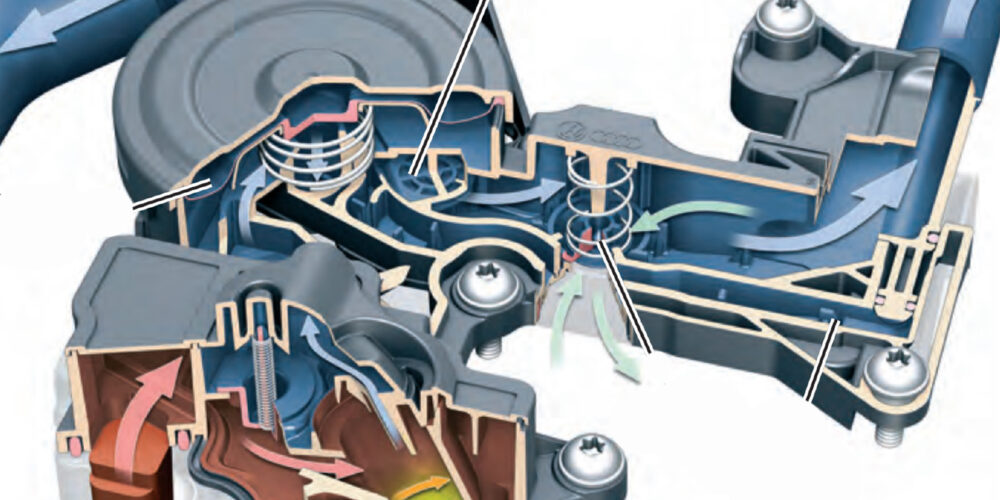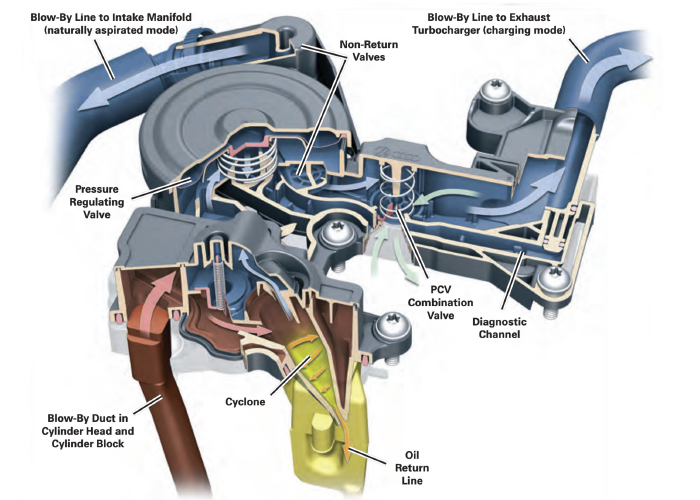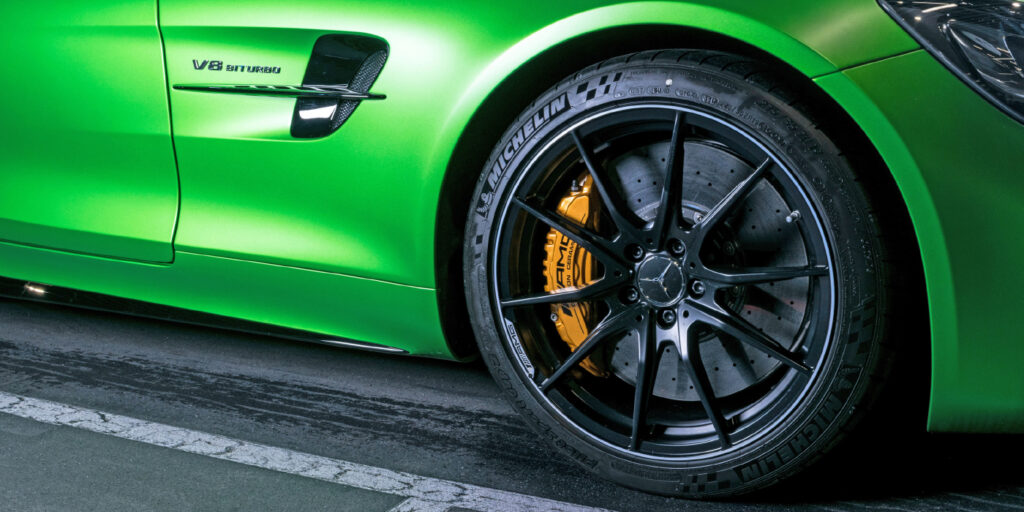Positive crankcase ventilation (PCV) systems have been on just about every vehicle since the late 1960s. The systems route crankcase vapors and droplets into the intake manifold so they are burned in the combustion chamber or catalytic converter.
The PCV valve uses the vacuum from the intake manifold to regulate the flow of gases from the crankcase. The pintle or ball inside the valve moves in response to the pressure difference between the crankcase and the intake manifold. The valve is typically located between the throttle body and cylinder head on a runner for the intake manifold.
But what happens when an engine is turbocharged? Forced induction pressurizes the intake manifold and even the crankcase under certain conditions. The gas and oil bypassing the rings are still present. And, the pressure generated by the turbocharger can increase crankcase pressures further. That’s when a more advanced PCV system is required. If the diaphragms and springs are not working, it can cause boost issues and oil consumption.
Vacuum is present before the turbocharger. On some engines, the vacuum is greater than the vacuum generated by the pistons moving downward, but not all the time. Vacuum is generated only when the turbo is spinning. The area before the turbocharger is typically where the vapors from the crankcase are fed into the engine. Some turbocharged engines will feed crankcase vapors into the intake manifold with a bypass valve when the turbo is not creating enough vacuum.
Turbochargers do not like ingesting the oil that can be found in crankcase vapors. The oil can form carbon deposits on the vanes and housing and cause a loss of boost.
Modern turbocharged engines from VW and Audi have large oil separators typically incorporated into the valve cover or on the side of the engine block. The crankcase pressure is not managed by a simple check valve. Pressures are monitored electronically or mechanically at both the crankcase and intake. The system directs the vapors to either before the turbo or intake manifold when the time is right.
These next-generation PCV systems can fail because they are exposed to high temperatures and combustion gases that can damage plastic, flexible diaphragms and seals. They also can be part of the valve cover.
One essential piece of equipment is a smoke or leak detection machine. Your regular smoke machine used to diagnosis EVAP problems might not work because boost levels are, in some cases, five times higher than EVAP testing requires. But, there are high-pressure smoke machines that can detect leaks in turbocharger systems.















